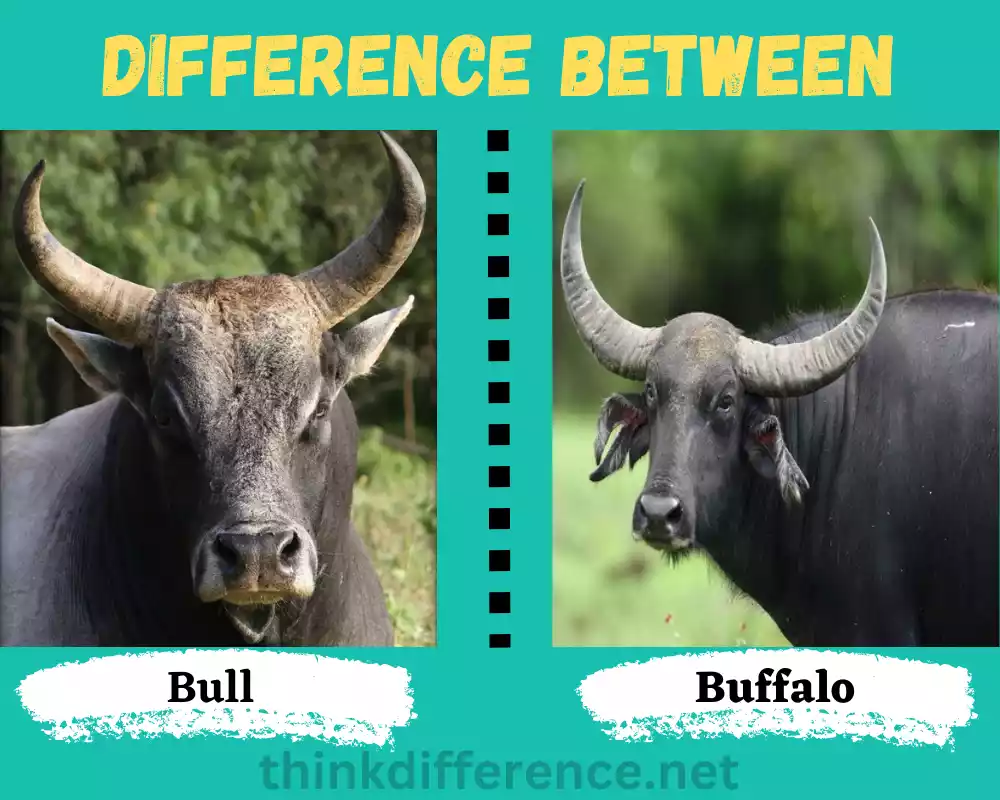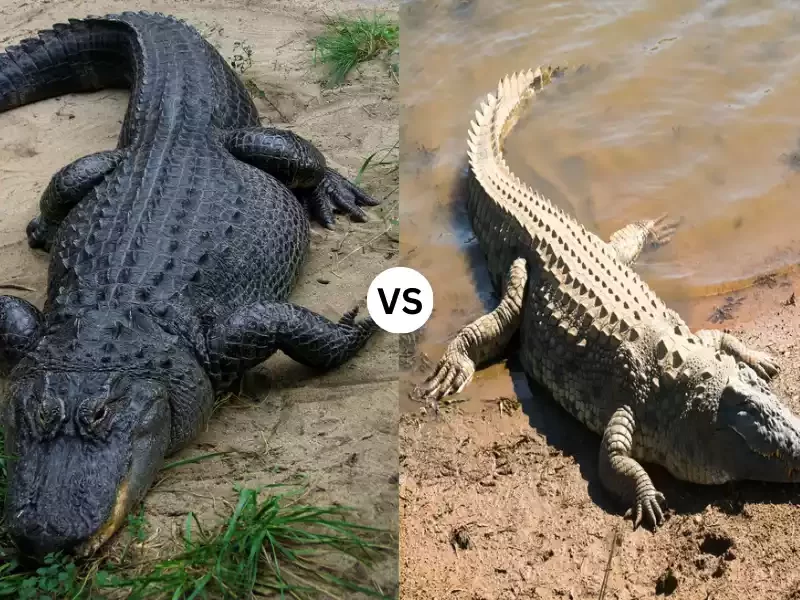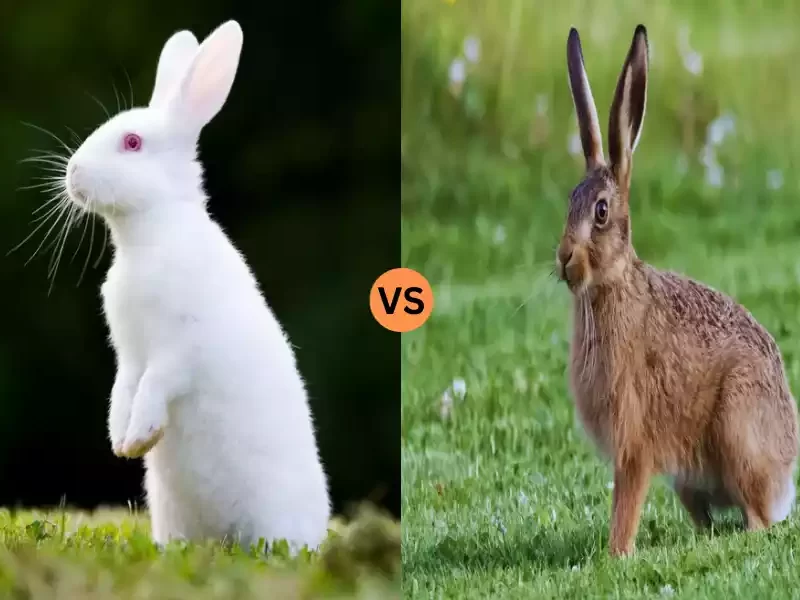Bull and Buffalo are two iconic species often mentioned when discussing animal behaviour, though there are notable distinctions. We will investigate their habitat, behavior and importance here so you can learn what sets each one apart – take a peek into this fascinating world!
Definition of Bull and Buffalo
Bull:
Bulls are bovine male animals belonging to the Bovidae family of cattle (Bovidae). Within this genus is Bos taurus and Bos primigenius species, both domesticated breeds as well as wild.
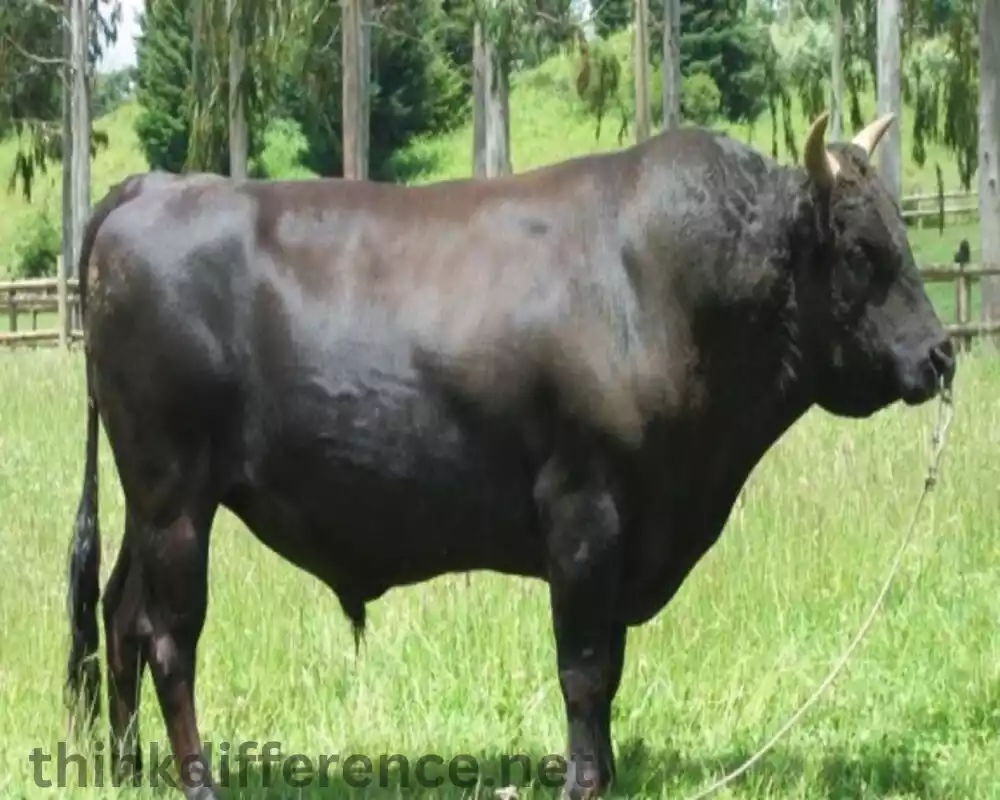
Bulls can be distinguished from other cattle by their huge size, muscle build, distinctively-shaped horns that vary based on breed or species – they play an essential part in livestock breeding programs, agriculture operations and industry production. While in certain cultural contexts the word ‘bull’ can refer more broadly – such as buffalo or bison!
Buffalo:
Buffalo are large bovine animals from the Bovidae family. While “buffalo” may often be mistakenly used as shorthand for “bison”, in reality this term only refers to real buffalo indigenous to Africa and Asia and not bison from North America and Europe.
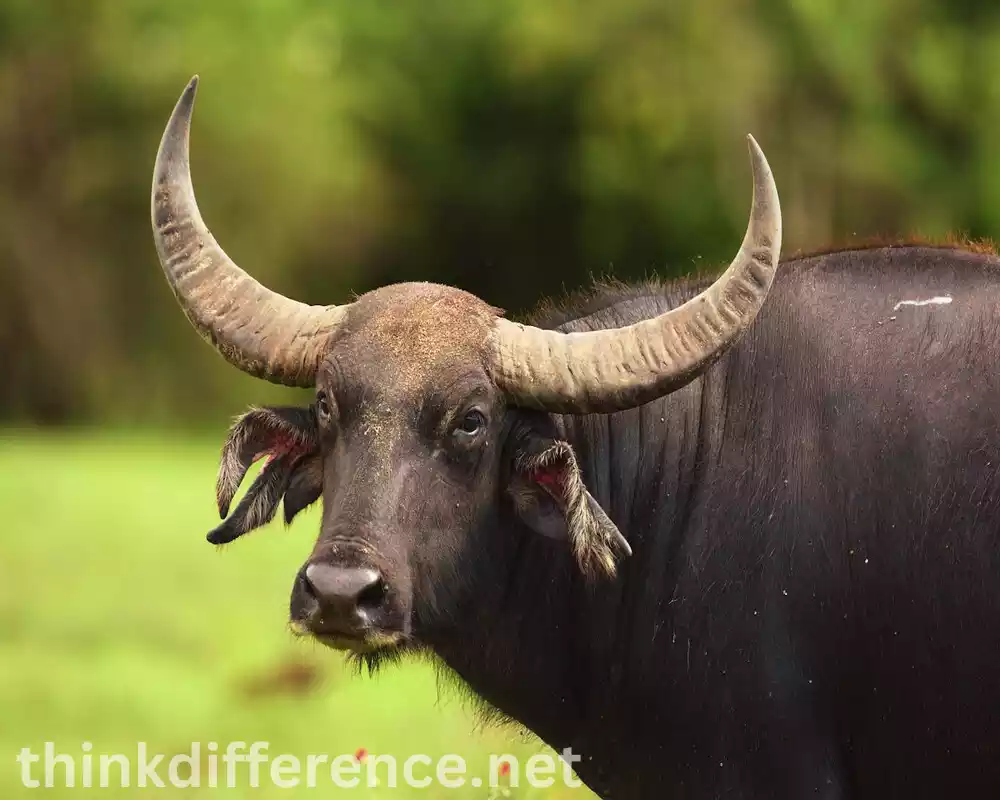
Buffalo species consist of both African buffaloes (Syncerus caffer) and Asian water buffaloes (Bubalus bubalis). African buffaloes are widely recognized for their sturdy builds and long, curved horns which allow for large herd formation, while Asian water buffaloes stand out with their massive dimensions, strong builds and distinctive pair of upward-curving horns that create distinct herds.
Buffaloes are herbivores that reside mainly in wetlands, grasslands and forested zones. As with other mammals they have evolved over time to adapt to various environmental and climate conditions throughout their range and in times past they played an essential part in transportation, agriculture and cultural practices across various regions – even being revered in some societies for symbolizing strength, endurance and the rich cultural legacy they represent.
Physical Characteristics
Physical characteristics of buffaloes and bulls will differ based on breed and species, here are some general traits for each:
Bulls:
- Size and Weight: Bulls are typically larger and heavier than cows. Size varies based on breed, typically between 1,800-2,500 pounds (875 to 1101 kilograms).
- Body Structure: Bulls have a muscular build with a robust frame. They often have a prominent neck, broad chest and powerful shoulders.
- Horns: Bulls possess horns that are typically larger and more prominent than those of cows. The shape, size and curvature of the horns can vary between breeds.
- Coat Color and Texture: The coat of bulls comes in various colors and patterns, depending on the breed. It can range from solid black or brown to spotted or multicolored. The texture of their coat can also vary, from smooth and short to longer and shaggier in certain breeds.
Buffaloes:
- Size and Weight: Buffaloes are generally larger and heavier than bulls. The specific size can vary between species and subspecies. Example, African buffalo weigh between 1,100 to 2.200 pounds (504 to 1,000 kilograms). Asian water buffalos typically range in weight between 1,550-1600 tonnes (701 – 1207 kgs).
- Body Structure: Buffaloes have a robust and stocky build with a large hump of muscle on their shoulders. They have a broad chest and a thickset body.
- Horns: Buffaloes have horns that typically curve backward and upward. The size and shape of the horns can differ among species and individuals.
- Coat Color and Texture: The coat of buffaloes can vary in color, ranging from dark brown to black. They often have coarse and thick hair, especially in colder regions. Some buffalo species, like the Asian water buffalo, also have a layer of skin called “mud wallow” that helps protect them from insects and sunburn.
Keep in mind that physical characteristics could differ considerably among different bull breeds and subspecies of buffaloes.
Habitat and Distribution
Habitat and distribution patterns differ between bulls and buffaloes.
Here are the general characteristics of their habitats and distributions:
Bulls:
- Habitat: Bulls, as domesticated cattle species, can be found across numerous habitats. Their adaptability enables them to fit seamlessly into grasslands, mountains, forests and desert environments – depending on which breed of bull they belong to and the purpose for breeding them.
- Distribution: Domestic bulls can be found all around the globe as they have long been utilized as livestock and agricultural production animals. Their breeding has expanded across North America, South America, Europe Asia and Africa to support this production need.
Buffaloes:
- Habitat: Buffaloes inhabit various environments depending upon their species of animal. African buffaloes tend to inhabit grasslands, savannas and woodlands while Asian water buffaloes thrive in wetland streams and riverine areas where moisture-rich environments exist. Their adaptation allows them to live effectively within those habitats.
- Distribution: Buffaloes inhabit various regions around the globe. African buffaloes can typically be found throughout sub-Saharan Africa in countries like Kenya, Tanzania and South Africa up to regions like Democratic Republic of Congo and Uganda. Asian water buffaloes (sometimes also referred to as water bovidae or water bisons), typically inhabit Southeast Asian nations like India China Indonesia Philippines however through human activity some have become established elsewhere such as Australia as well North America.
Bear in mind that habitat and distribution areas for buffaloes and bulls vary based on subspecies or species studied; wild species might cover less territory compared to domestic variants.
Domestication and Use
Domestication and the use of bulls and buffaloes have played significant roles in human societies.
Here are the key points regarding their domestication and uses:
Bulls:
- Domestication: Bulls, as well as cows, have been domesticated for thousands of years. The process of domestication involved selectively breeding wild bovine species to develop traits suitable for human purposes.
- Agricultural Use: Bulls are primarily used in agriculture, particularly in farming and labor-intensive tasks. They have been trained as draft animals to pull plows or wagons, assisting in tilling fields and transportation of goods.
- Livestock Industry: Bulls are integral to the livestock industry for breeding purposes. They are selected as sires to improve the genetic traits of a herd, contributing to the production of quality calves for meat or dairy production.
- Sport and Entertainment: In some cultures, bullfighting or rodeos are practiced as traditional sports or forms of entertainment, where bulls are involved in competitions or performances. Be mindful that these practices could raise ethical concerns.
Buffaloes:
- Domestication: Domesticating water buffalos has been done for millennia in Asia At first for agriculture purposes as draft animals or draft use.
- Utilization in Agriculture: Buffaloes are widely employed in agriculture, particularly rice cultivation. Their ability to work under wet and muddy conditions makes them well suited for ploughing fields, pulling carts and carrying loads over distance.
- Producing Dairy Products: Water buffalos are highly sought-after animals because of their milk production. Buffalo milk is commonly used to craft various dairy products like yogurt, cheese and butter – especially popular products in countries like India, Pakistan and Italy where buffalo milk products have long been enjoyed as staples.
- Cultural Significance: Buffaloes have both cultural and historical importance throughout various regions. Revered within certain communities with symbols or religious associations associated with them or used during rituals or celebrations.
Buffaloes and bulls were historically utilized for various reasons. Society and technological progress has led to new methods and equipment becoming widespread, their functions and usage remain prevalent within various cultural and agricultural contexts worldwide.
Behavior and Social Structure
Behavior and social structure can differ between bulls and buffaloes.
Here are some key points about their behavior and social dynamics:
Bulls:
- Herd Dynamics: Bulls typically exhibit herd behavior, living in groups consisting of cows, calves and other bulls. Within the herd, a dominance hierarchy is established, where some bulls may be more dominant and assert their authority over others.
- Mating Behavior: Bulls play a crucial role in the reproduction of the herd. During the breeding season, they compete with other bulls for access to cows and engage in mating rituals, such as vocalizations, displaying physical prowess or fighting to establish dominance.
- Solitary Behavior: Bulls may exhibit solitary behavior, especially when they are not actively participating in breeding activities or when they are mature and establish their territories.
Buffaloes:
- Herd Dynamics: Buffaloes, particularly the African buffalo and Asian water buffalo are known for their gregarious behavior and form large herds. These herds can consist of hundreds or even thousands of individuals. The herd provides protection against predators and enhances their chances of survival.
- Social Interactions: Buffaloes within a herd engage in social interactions, such as grooming, mutual defense against predators, and communal grazing. They have developed cooperative strategies to increase their safety and chances of finding food in their respective habitats.
- Communication: Buffaloes communicate through a combination of vocalizations, body language and scent marking. They use various vocal sounds, including grunts, bellows and low-frequency calls, to convey messages within the herd. Body language, such as head movements, ear positions and tail flicking, also plays a role in their communication.
Buffaloes and bulls exhibit typical herbivorous behaviors such as grazing vegetation, resting and engaging with other animals, which include grazing for sustenance while resting as well as engaging in interactions between themselves and other species. Their social structures and behaviors differ, with bulls typically exhibiting more individualistic behavior and buffaloes displaying more pronounced herd dynamics.
Diet and Feeding Habits
Buffaloes and bulls tend to be herbivores, depending on the animal and natural habitat they inhabit there may be slight variations in diet or eating habits.
Here are a few important points about their diets and eating patterns:
Bulls:
- Herbivorous Diet: Bulls typically follow an herbivorous diet. This means they primarily depend on plant-based sources for nourishment.
- Vegetation Types: Their diet consists of various plants such as grass leaves and stems from hay bales as well as browse (non-grassy parts of plants).
- Feeding Behavior: Bulls are grazers, meaning that they get their food by grazing grasses and other low-growing plants with their tongues and mouths utilizing powerful tongues to grab and force plants into their mouths; then after digesting this meal again by the process of rumination they regurgitate it back into their bodies for digestion purposes.
Buffaloes:
- Herbivorous Diet: Buffaloes are also herbivores, relying on plant-based materials for their nutrition.
- Types of Vegetation: The specific vegetation consumed by buffaloes can vary based on the species and their native habitats. They graze on grasses, aquatic plants, reeds and other available vegetation in their environments.
- Feeding Behavior: Buffaloes are known for their grazing behavior, where they move through grasslands or wetlands, feeding on the available vegetation. They have a wide mouth and a specialized tongue that allows them to gather and consume large amounts of grass efficiently. Buffaloes may also engage in wallowing behavior, where they roll in mud or water, helping to cool themselves and protect against insects.
Buffaloes and bulls’ diet is dependent upon many different factors including natural habitat conditions as well as seasonal changes and available sources of sustenance.
Conservation Status
Conservation statuses of buffaloes and bulls depend on both their species of origin as well as population sizes, so here are some key facts regarding their conservation status:
Bulls:
- Domestic Bulls: Since bulls are part of domestic cattle, their conservation status is not assessed independently. Some breeds of domestic cattle may face conservation concerns if they are rare or at risk of genetic erosion due to the dominance of certain highly bred breeds.
- Wild Bulls: The wild ancestors of domestic cattle, conservation efforts may focus on preserving their genetic diversity and protecting their natural habitats. Some wild bull species, like the endangered wild water buffalo (Bubalus arnee) or the critically endangered kouprey (Bos sauveli), require conservation attention.
Buffaloes:
- African Buffalo: According to the International Union for Conservation of Nature (IUCN), African buffalo (Syncerus caffer) species have been categorised as being of “Least Concern,” likely as a result of its stable population and wide spread distribution throughout Sub-Saharan African regions. Local populations could still be endangered through habitat destruction or disease transmission as well as illegal hunting practices.
- Asian Water Buffalo: The conservation status of the Asian water buffalo (Bubalus bubalis) varies depending on the specific subspecies and populations. Some populations, such as the Philippine water buffalo (Bubalus bubalis mindorensis) are listed as endangered due to habitat loss and hunting. Other populations, especially those that are domesticated, may not face significant conservation concerns.
It’s crucial to note that specific regional populations and subspecies of bulls and buffaloes may have their own unique conservation statuses. It is important to monitor and manage their populations, protect their habitats and address specific threats to ensure their long-term survival and genetic diversity. Conservation efforts include initiatives such as protected areas and breeding programs as well as community-driven conservation programs.
Cultural Significance and Symbolism
Bulls and buffaloes hold cultural significance and symbolism in various societies and have been woven into the fabric of human cultures throughout history.
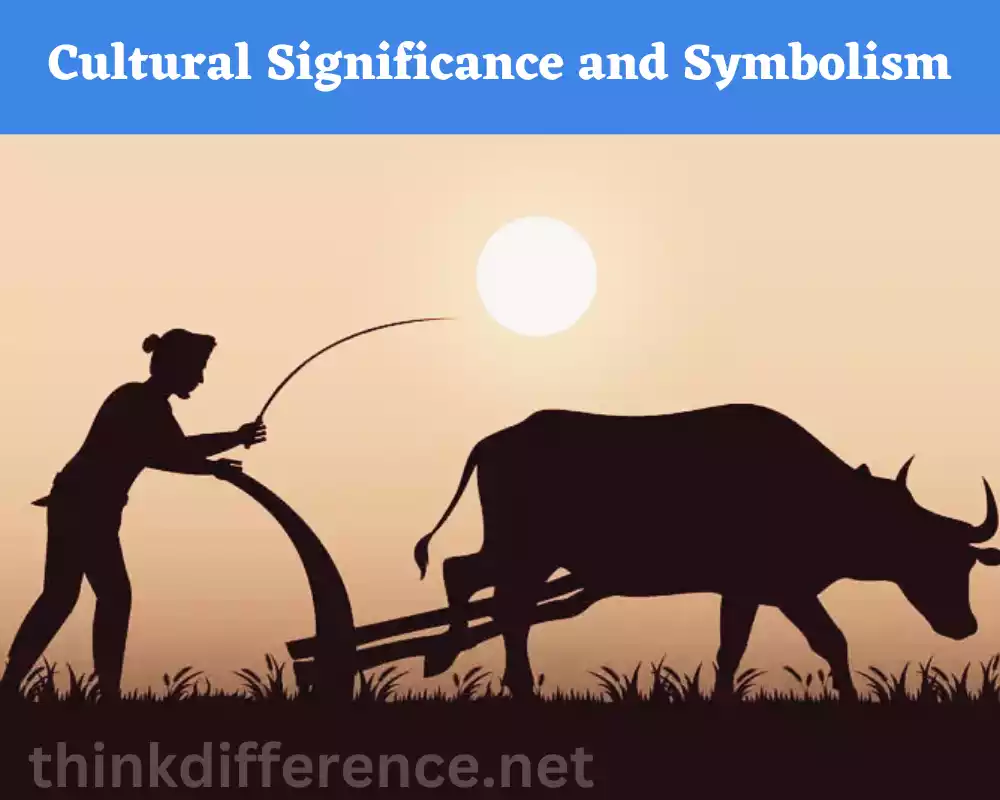
Here are some aspects of their cultural significance and symbolism:
Bulls:
- Strength and Power: Bulls are often associated with strength, power and masculinity. Their muscular build, imposing presence and ability to exert force make them symbols of power and vitality in many cultures.
- Fertility and Virility: Bulls are often linked to fertility and virility due to their role in breeding and reproduction. They symbolize abundance, productivity and the continuation of life.
- Symbol of Agriculture: Bulls have played a vital role in agriculture as working animals. They represent the connection between humans and the land, embodying the labor and effort involved in cultivating the earth.
- Religious and Mythological Significance: Bulls have been revered in numerous mythologies and religious traditions. In some cultures, they are associated with deities or considered sacred animals, representing divinity, sacrifice or a link between the human and spiritual realms.
Buffaloes:
- Agricultural Importance: Buffaloes have been essential for agricultural practices, particularly in rice cultivation in many Asian countries. They symbolize agricultural abundance, prosperity and the connection between humans and the land.
- Cultural Heritage: Buffaloes are deeply ingrained in the cultural heritage and traditions of certain communities. They are often featured in folklore, rituals and celebrations, representing cultural identity and ancestral ties.
- Resilience and Adaptability: Buffaloes are well known for their resilience in difficult conditions like marshes and wetlands, representing strength, adaptability and an ability to face up against challenges head on.
- Spiritual and Symbolic Significance: Buffaloes may hold spiritual significance in some cultures, representing divine qualities, sacredness or acting as protectors against evil forces.
The cultural significance and symbolism of bulls and buffaloes can vary widely across different regions, religions and traditions. They reflect the deep connections between humans and animals, embodying values, beliefs and historical practices in diverse cultural contexts.
Comparison table of Bull and Buffalo
Here’s a comparison table highlighting some key differences between bulls and buffaloes:
| Aspect | Bull | Buffalo |
|---|---|---|
| Species | Domesticated cattle | Various species, such as African and Asian water buffalo |
| Size and Weight | Generally large and heavy, 1,800 to 2,500 pounds (800 to 1,100 kilograms) | Larger and heavier than bulls, 1,100 to 2,600 pounds (500 to 1,200 kilograms) |
| Horns | Prominent horns, larger and more prominent than cows | Horns that curve backward and upward, size and shape varying between species |
| Coat Color and Texture | Various colors and patterns, texture varies from smooth to shaggy | Dark brown to black, often with coarse and thick hair |
| Habitat | Adaptable to various environments, including grasslands, forests and mountains | Savannas, grasslands, wetlands and riverine areas |
| Distribution | Found in numerous countries worldwide | Primarily found in sub-Saharan Africa and Southeast Asia |
| Uses | Agriculture, breeding, meat and dairy production, traditional sports like bullfighting or rodeos | Agriculture, draft animals, rice cultivation, dairy production, cultural significance |
| Social Structure | Often live in herds, dominance hierarchy established, may exhibit solitary behavior | Form large herds, gregarious behavior, social interactions within the herd |
| Conservation Status | Conservation status not assessed individually, some wild bull species may require conservation attention | African buffalo – Least Concern, some Asian water buffalo populations endangered |
| Cultural Significance | Symbol of strength, power, fertility and agricultural abundance | Symbol of agricultural importance, resilience, adaptability, and cultural heritage |
Conclusion
Bull and Buffalo hold a special place in human history, culture, and nature. Their power, grace, and significance have left lasting imprints on different aspects of society. As we move forward, it is crucial to appreciate and protect these magnificent creatures, ensuring their coexistence with humans for generations to come.

